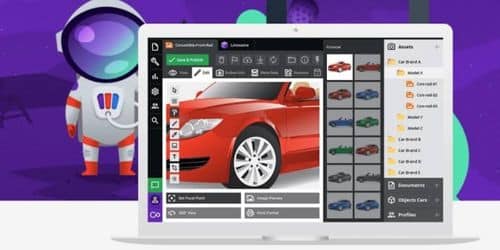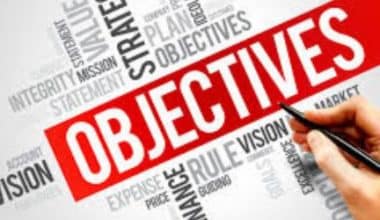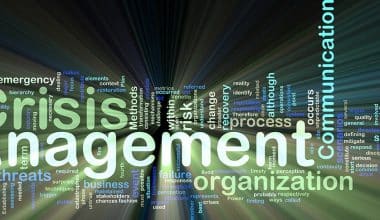Every organization should keep track of its asset management tools. However, software and hardware asset management tools are more commonly used to manage and track businesses in this digital era than ever before. The asset management tools and tracking of IT assets have grown significantly more difficult as a result of the proliferation of mobile devices in the workplace, the complexity of cloud technologies, licensed-based software, and more regular updates. Additionally, more frequent employee turnover raises concerns about data security. The best asset management tools will be talked about in this article.
What Is an Asset Management Tool?
An asset management tool is a tool that ensures your business can maximize its resources, allowing it to flourish and thrive. It will aid in maintaining order, controlling risk, and more for your company.
However, a reliable asset management system is a crucial component of any efficient corporate administration plan. The fact that it’s a boring, routine job means it’s often disregarded. But this interpretation is incorrect. A successful asset management tool is essential to the success of any company, enriching not just the company but also its shareholders.
What Does an Asset Management Tool Do?
Using asset management tools, your company can keep tabs on every valuable possession and its current location, condition, and value. As a result, your business will have better visibility into asset utilization, prices, and maintenance while cutting down on administrative expenses.
What Are the Two Types of Asset Management?
It is important to choose the type of management that best meets your company’s demands in order to manage your assets in the most efficient manner. Understanding the various types of asset management is an important part of selecting a workable solution. These are the two types of management assets.
- Digital asset management
- Fixed asset management
Advantages of Using the Asset Management Tool for a Small Business?
- Getting Rid of Manual Methods
- Centralized Information
- Increasing Asset Life
- Genuine Data
- Effective Asset Maintenance
#1. Getting Rid of Manual Methods
Small organizations employ pen-and-paper methods or spreadsheets. Human mistakes make pen and paper incorrect. Anyone can access and edit the spreadsheet, intentionally or not. No tracking. These strategies function with fewer assets. These strategies become inefficient as the number of assets grows. Only use reliable data. An asset management system guarantees dependable data. It automates manual processes.
#2. Centralized Information
Incorporating asset management software into the workplace paves the way for easy data access for all workers. Going to the office is unnecessary, so that’s a time saver. In addition, you may use this hub to keep tabs on your possessions and organize your stock levels. If your assets are stored in one place, you can see everything at once. It also notifies whoever is responsible for maintenance of an upcoming maintenance work order.
#3. Increasing Asset Life
Money is a touchy subject for many small businesses because of their limited funds. One of the primary goals, then, is to achieve more success with diminished outlays of resources. Similar to this is the concept of “increasing asset life,” which aids businesses in optimizing the use of their assets from the time they are first acquired until they are finally disposed of. In addition to enhancing asset performance, this asset management tool contributes to overall strategic planning. One way to save cash is to plan ahead and anticipate repairs or replacements. It may also have an effect on the bottom line of the company.
#4. Genuine Data
An asset management tool provides reliable data and insights. With reports, you may determine where to invest more resources, where to reduce expenses, and what you want to achieve in the next few years. Reports save money, set goals, and build your business. If you don’t have reliable data, you’ll make bad decisions. With this software, you may acquire any piece of information in minutes, saving time by not having to find a file book and asset paperwork.
#5. Effective Asset Maintenance
All businesses, regardless of size, need regular maintenance. But it’s especially crucial for SMBs since their lack of assets can lead to a drop in output and, ultimately, a loss of consumers.
Maintenance of assets ensures that they remain in good working order. Better performance and less risk of unexpected breakdowns are two benefits of regular asset maintenance. The life of any item can be significantly increased by proper maintenance.
This tool has a maintenance scheduling component to help you keep your equipment in tip-top shape. In comparison to reactive maintenance plans, this software’s proactive nature results in significant cost savings.
Software Asset Management Tools
By automating operations like patch and licensing management, inventory tracking (including locating inefficient usage of licensed software), policy establishment, and lifecycle management, Software Asset User Management (SAM) aids in the management and organization of IT assets.
By deciphering software license entitlements, automating the collection of software consumption data, establishing vendor-specific effective license positions (ELP), governing software assets, optimizing software value, and sharing information with other tools and stakeholder groups, SAM tools provide in-depth analysis and management of software assets.
Furthermore, the best way to keep track of your software installations and confirm that you are in compliance with your software contracts is with software asset management tools. It just isn’t feasible to have an accurate representation of your software environment without some sort of SAM solution if you have a larger infrastructure with thousands of devices to manage. Additionally, SAM can be used to move assets between departments, simplifying and improving the overall administration of software and hardware while also lowering costs.
In light of this, here are the top three software asset management tools available right now.
#1. InvGate Assets
InvGate Assets is a configurable SAM with a browser-based front-end interface. Change Management, Advanced Reports, License Management, Remote Desktop, and Software Development are among its features. It alerts you when licenses are due to expire, and you may set alarms for priority activities like updating licenses or renewing IT equipment.
#2. ManageEngine AssetExplorer
ManageEngine AssetExplorer offers a 30-day fully-functional trial for Windows-savvy IT professionals. It includes tracking and reporting tools and manual support for physical and virtual assets. Hosted in the cloud, AssetExplorer enables VM-based asset support and relationship mapping.
#3. ServiceNow Asset Management
Cloud-hosted ServiceNow Asset Management is for advanced users. In response to customer feedback, it’s been simplified and now has a left-sidebar UI. It helps admins employ workflows to automate IT asset lifecycles and track financial, contractual, and inventory aspects of hardware and devices while tracking maintenance activity. It allows regular audits till the hardware is retired.
What Advantages Do Software Asset Management Tools Offer?
Software asset management tools concentrate on optimizing the software asset ecosystem within a business, in contrast to conventional corporate asset management software, which focuses mostly on hardware assets. SAM solutions offer a wealth of advantages when used appropriately. Some of the advantages that firms can get from using them are
#1. It Has More Effective Life Cycle Management
Tools for managing software assets at every point of the life cycle increase proficiency and effectiveness. Additionally, it is the best tool for ensuring configuration management, which entails maintaining the consistency and desired state of your on-premise servers, data centers, and SaaS platforms.
SAM tools provide technical and end-user support. Internal IT teams can execute ticketing and help desk management processes smoothly in on-premise environments because they know end-user system configuration and usage patterns. When IT gets all the end-machine user’s information, troubleshooting is easy.
#2. Enhanced Risk Reduction
Businesses open themselves up to numerous dangers, including compliance and audit issues, when they are unaware of the software to which they have subscribed. If a company doesn’t already have dedicated vendor risk management software in place, it can still monitor and reduce risks with the help of its software asset management tool.
While SAM tools concentrate on the endpoint security of software assets, both on-premise and cloud SaaS apps, IT service management (ITSM) largely focuses on the risks connected with hardware assets like laptops. Software providers are already beginning to undertake routine audits to look for violations of license agreements.
#3. More Cost-Effective Improvement
By maximizing software spending, businesses can benefit from cost-saving potential. When companies don’t know where their money goes or what software they already own, they frequently wind up overspending on software assets. This issue is resolved by SAM tools using appropriate asset-tracking procedures, also known as software asset optimization.
#4. It Increases Negotiating Strength
Businesses can increase their negotiating strength by using SAM tools. Businesses may make wise decisions regarding future acquisitions when they are aware of the usage trends, features used, stakeholders, and other critical information about their software stack.
SAM tools track renewal dates and alert stakeholders to negotiate better terms early. Some software service providers provide early payment discounts, volume discounts, and more. SAM solutions lower contractual risks by improving purchasers’ negotiating power.
What Are the 3 Methods That Are Used to Manage Asset Management?
A successful asset management system implementation relies heavily on a well-aligned company. How do you make sure the asset management program’s message, direction, and principles are conveyed consistently and effectively, given that different change management strategies will be used to bring about the change? Here are the 3 methods used to manage asset management.
- Formulation of a Strategy for Managing Assets
- Policy for Managing Assets
- Plan for the Strategic Management of Assets
Digital Asset Management Tools
By storing and organizing files with digital asset management software, customers can keep their assets safe from theft. Project workflow can be facilitated by digital asset management tools and software, which can also assist with typical project difficulties. No more wasting hours searching through your files on a hard drive in search of one image because everything is in one location.
What Is a Digital Asset Management Tool?
Digital asset management (DAM) is a software program used to store and manage digital content in one location. A centralized DAM solution, which is simple to use and quick to set up, offers internal and external stakeholders regulated access to all of their digital assets, including pictures, photos, creative files, videos, audio, presentation decks, documents, and much more. The ability to boost campaign productivity and guarantee brand consistency is what DAM systems most critically offer.
However, the best digital asset management tools ultimately arrange your digital assets to maximize their value to your brand. Its capabilities enable you to automate workflows, specify asset licensing expiration dates, and create different degrees of user access for individual files, folders, projects, and campaigns. Digital asset management tools may also show you how creative assets are performing using in-app statistics.
The terrible truth is that when files are kept across various platforms and devices, they frequently become lost. All of a brand’s assets are kept in one location by cloud-based digital asset management tools, allowing users to safely collaborate on material from any location.
What Are the Benefits of Digital Asset Management Tools?
As a result, relying on digital asset management tools and software has several advantages, some of which go beyond those brought on by the collection of data. Here are some of the benefits.
#1. Fast and Simple File Access
Most DAMs are cloud-based, so anybody with an internet connection can access digital assets 24/7. Internal and external stakeholders can discover what they need faster and focus on more vital activities if all digital content is consolidated. Access rights and permissions can be customized for various users to ensure they have access to the proper files.
#2. Protect Assets
By assuring secure storage in one area, a DAM system’s implementation removes the possibility of losing crucial and private documents. When files are stored on external hard drives, personal desktops, or folders, they are less likely to be lost, which frequently happens.
#3. Everybody Is Using the Most Recent Content
By using digital asset management tools, you lower the possibility that obsolete files will be used. Users can rest easy knowing they’re always using the most recent material because important assets are quickly updated after posting.
#4. Reduce Operating Expenses
If you spend less time looking for a file, you may devote that time to other important tasks. Your return on investment (ROI) in all of your brand and content marketing activities will increase thanks to DAM’s streamlined processes for creating, retrieving, storing, and disseminating digital information.
Best Asset Management Tools
There is a need for asset monitoring and management in all businesses, from the smallest startup to the largest multinational conglomerate. Furthermore, there is typically a sizable initial outlay required for capital costs, on top of regular expenses like contract maintenance and unexpected breakdowns. Saving money and increasing productivity are just two of the many benefits that can result from implementing effective asset management software technologies.
However, it is important to prioritize the features and capabilities needed to support your workflows and overall operations when selecting the best asset management software tools from the many good options available, such as Enterprise Asset Management (EAM) and Facilities Management systems.
Additionally, these tools contain numerous alternatives that can be combined with barcode scanners and other technologies for a comprehensive asset tracking solution. They also cover a wide range of software types. These are some of the platforms with the best asset management tools.
- Eagle proteus
- eMaint
- Fiix
- MaintainX
- Azzier
Hardware Asset Management Tools
Management of the physical components of computers and related systems is referred to as “hardware asset management” (HAM), and it involves a number of distinct procedures, tools, and approaches.
Hardware asset management is a subcategory of IT management that deals specifically with the hardware of an organization’s IT infrastructure. The Hardware Acquisition Lifecycle (HAM) begins with the purchase of equipment, continues through its useful life, and concludes with its recycling or disposal once it has served its purpose. Hardware asset managers are in charge of this task, thus they should know every piece of hardware in use at their company inside and out and be able to collaborate effectively with colleagues at all levels.
What Is a Hardware Asset?
Hardware assets are a catch-all term for any physical piece of technology owned by an organization. This includes both operational and non-operational assets. Based on this concept, hardware assets can be broken down into four broad classes.
#1. Telecom and Network Hardware
Hardware for networks and telecommunications serves as a support system for analog and digital communication. Switches, load balancers, routers, and telephone and video conferencing systems are all included in this.
#2. Peripherals
The important auxiliary equipment present in every area of the modern office setting is referred to as peripherals. Scanners, printers, displays, keyboards, headsets, projectors, and even cables and adapters are examples of peripheral devices.
#3. End-User Equipment
End-user hardware is any corporate hardware that is directly used by workers in the course of their daily work. Computers, tablets, smartphones, SIM cards, and other devices are included in this. Personal computers and other mobile devices used by employees to do work are also considered hardware assets.
#4. Data Center Hardware
The term “data-center equipment” refers to all hardware, such as servers, utilities, and security devices, that enables data centers to operate efficiently.
Hardware asset management must be able to accommodate remote workers’ needs and keep track of the tools they use to do their duties.
What Are the Benefits of Hardware Asset Management?
Business hardware doesn’t often seem like a very safe investment because it loses value quickly, experiences constant wear and tear, and needs ongoing maintenance as well as sporadic repairs. These disadvantages are mitigated by efficient hardware asset management. The following are some HAM benefits:
- strengthened loss prevention
- higher productivity
- superior lifecycle management
- Maximized efficiency
#1. Strengthened Loss Prevention
It is simple to trace equipment and find missing hardware when there is an accurate inventory of all company gear, both in use and in storage. Organizations can reduce risks related to incomplete asset knowledge via asset labeling, allocating ownership, and tracking the object’s whereabouts. Additionally, it enables HAMs to pinpoint which assets are unused and therefore more likely to be the target of theft.
#2. Higher Productivity
Without a hardware asset management plan, staff handle and track equipment. Without HAM best practices, workers may use wasteful, ineffective, or time-consuming methods. Proper asset management assures correct cataloging and distribution of important equipment. It also frees up staff time by identifying asset issues before they arise and automating many asset management operations.
#3. Superior Lifecycle Management
HAM enables enterprises with total asset lifecycle insight and control. Asset managers may easily access product and vendor details, usage history, ownership, and tasks for every piece of equipment. HAMs can use this data to make better vendor contracts, service, and replacement decisions.
#4. Maximized Efficiency
Proper training on company equipment use and regular scheduled maintenance and upgrades are two ways to guarantee that workers are making the most of the tools at their disposal. Organizations may save money and make better use of their hardware investments thanks to precise asset inventories, which help to prevent wasteful spending.
What Is IT Management?
IT Asset Management Software (ITAM) is a digital solution for monitoring, tracking, and managing IT assets. IT managers use it to increase network infrastructure visibility. Specifically, asset, life cycle, and inventory management processes. Software licenses, IT gear such as computers, and cloud subscriptions can all be tracked by businesses. Allowing organizations to create accurate IT asset registers and CMDBs. ITAM software ensures compliance, improves asset discovery, and enhances audit management.
What are IT Asset Management Tools?
Asset management in IT teams mostly includes monitoring mobile devices and virtual machines in addition to keeping track of the physical hardware that makes up your infrastructure. IT asset management tools have expanded to include software licenses and cloud subscriptions so firms may receive a complete view of their IT infrastructure. Photocopiers, printers, company cars, and computer seats must all be tracked in procurement, facilities management, and accounting. This used to be done manually using spreadsheets, but now tools and software may simplify and speed up the process.
Why Are IT Asset Management Tools Necessary for Asset Management?
IT asset management is the administration of IT assets within a company. Monitors, servers, desktops, software licenses, and cloud apps are all included. An IT management system’s goal is to maximize the value of a company’s IT assets. while also reducing risks, including inadequate asset detection, procurement prices, and network security. IT assets are classified into four categories. They are software, hardware, cloud-based applications, and mobile devices that are installed locally. IT organizations can benefit from the following when it comes to managing and tracking IT assets:
- Improving the Audit Management Process
- tracking and keeping track of hardware resources
- preserving all software, hardware, mobile, and cloud asset records
- gaining access to usage and subscription data
Conclusion
All firms can benefit from asset management tools. Cloud-based asset management software means you may access it from your smartphone anywhere. With cloud technology, you may make job adjustments from anywhere. These are just a handful of the many benefits of asset management software.
Asset Management Tools FAQs
What is effective asset management?
An efficient asset management system helps a corporation manage all of its assets.
What skills do you need for asset management?
- Strong time-management skills.
- Excellent critical thinking skills.
- Skilled in negotiation and project management.
- Highly skilled in math and finance.
What makes a successful asset manager?
Asset management requires confidence. It’s useless to second-guess yourself; evaluate the possibilities and act. You must exhibit confidence so coworkers and clients trust you.
Related Article
- SOFTWARE ASSET MANAGEMENT (SAM): Best Tools In 2023
- COMPUTER ANALYST: Job Description & Salary
- What is a Crypto Wallet? Types & How to Use them
- PROJECT TRACKING SOFTWARE: Reviews of Top 25 Project Tracking Software






